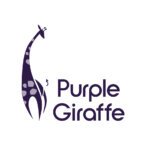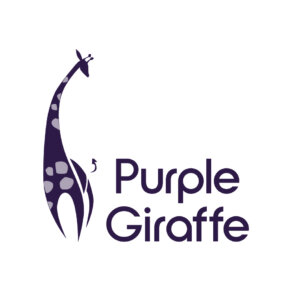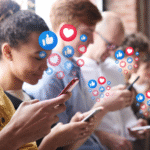Marketing abbreviations can leave you stumped! A quick Google search should set things straight but as mentioned in our November blog Alphabet Soup of Age Demographics, sometimes it may be face saving for Baby Boomers and Gen X to have a little extra help when conversing with the younger generations!
To help keep you in the loop, find below the top five marketing acronyms and abbreviations being bandied around today and what they actually mean!
Martech
Starting with the obvious, martech is the combination of marketing and technology. Virtually any business involved in digital marketing (anything internet related) is dealing with martech, since the digital space, by its very nature, is technologically-based. The term martech especially applies to major initiatives, efforts and tools that harness technology to achieve marketing goals and objectives. The marketing technology landscape includes both marketing automation and technology solutions in various digital marketing channels.
To take it one step further, it is useful to know that a “martech stack” is a collection of complementary marketing applications that share data. Your organisation should put together a high-performance and integrated martech stack by evaluating your company’s tech needs to address your marketing priorities. Marketo has recently published an EBook on how best to do this with a summary included below.[1]
- Document your strategy and the buyer’s journey
- Take inventory (of your existing marketing technologies)
- Get your data in order (clean up and validate all the data you have collected)
- Build your stack (ensure your technologies work together and data flows as needed and can be created, delivered, managed, tracked and analysed as intended)
- Be smart not static (add only as needed to enhance your existing processes)
- Plan for success (train all those who will use the technologies so your martech stack is put to good use)
AI (Artificial Intelligence)
AI was described as the most influential marketing term of 2017. But in 2018, the technology is likely to accelerate in actual use. AI is an area of computer science that relates to the creation of intelligent machines that work and react like humans, including speech recognition, deep learning, planning and problem-solving.
How might this relate to your marketing strategies? One way relates to content creation, where AI – specifically natural language processing (NLP) and natural language generation (NLG) – can be used to automate and accelerate content creation. AI systems can also personalise and test landing pages and improve conversions. Data analysis will also benefit from AI where it can extract insights from data that humans miss, potentially delivering new lead opportunities.[2]
CPA (Cost per Acquisition)
CPA (as well as standing for Certified Practising Accountant!) is the measurement of the cost of acquiring a customer who clicks on a website link or completes an action. This may result in making a sale or resulting in a new lead. It enables companies to determine their return on investment (ROI) by calculating ‘total marketing spend’ divided by ‘total front-end conversions’.
CPA is different to cost-per-impression (CPM) and cost-per-click (CPC) as CPA is based on specific lead or sales generation while CPM and CPC are based on eyeballs and traffic. CPA is on par with ROI, but not exactly the same, because it can be an accurate early indicator of long-term campaign success.[3]
There are a number of ways you may be able to optimise your CPA. One of these is to check that your Facebook, Google Adwords and any other paid advertising which lets you target users, is not targeting any location that has generated little to no sales in the past three months. If you find such locations, exclude them from your targeting. For example, instead of targeting an entire country, you may consider targeting at a city level. By focusing your marketing efforts and budgets on these cities, you may reduce your CPA. Similarly, for any paid advertising, you should make sure your campaigns are targeting only the languages and devices that are relevant to your market. You may also consider running remarketing campaigns that target those who have abandoned their shopping cart or started shopping activity on your website but did not complete it.[4]
Hyperlocal
Hyperlocal marketing is still a relatively new buzzword but the concept is really quite traditional. It refers to focusing on an area close to where your business is located or those people united in a specific community which may become your loyal customer base. It’s “hyper” local because it goes beyond local marketing using digital means.
Hyperlocal digital advertising is an efficient way to build a loyal customer base. Hyperlocal marketing campaigns can be optimised by making the marketing feel local and personalised and most importantly, targeted.
Region-specific marketing campaigns may include making use of local idiosyncrasies or local icons and incorporating them as part of your branding story. Despite the high level of interconnection due to technology, people desire genuine connection and hyperlocal marketing can provide this approach. One hyperlocal marketing strategy you may consider is cross-promoting with other local businesses.[5]
AR (Augmented Reality) and VR (Virtual Reality)
AR allows customers to experience your product on their device. People can’t touch the product physically but they can interact with it in a way that will influence their purchase decision. For example, they can see how clothing may look on or see how a new chair will look in their living room.
VR takes this experience one step further by building even more immersive, connected relationships with consumers. We touched on VR in last month’s blog as part of our understanding of what the world of Gen Z will look like, but explain it in more detail here.
The Virtual Reality Society succinctly describes the technology. “Virtual reality is the term used to describe a three-dimensional, computer generated environment which can be explored and interacted with in person. That person becomes part of the virtual world or is immersed within an environment and while there, is able to manipulate objects or perform a series of actions.”[6]
The success of both technologies in the short-term will depend on connectivity and the speed of processors. We are just at the beginning of AR and VR adoption, but the technology is already quite established. We will see these technologies begin to be used more in 2018 and beyond.
In conclusion
We hope this blog has provided at least one “aha moment” and given some insight into some of the marketing lingo and abbreviations becoming more commonplace in 2018. Our vocabulary will continue to grow as new high-tech areas such as AI, AR and VR are introduced to existing marketing strategies and old becomes new again, in more sophisticated formats!
[1] https://www.marketo.com/ebooks/7-steps-to-creating-a-high-impact-martech-stack
[2] https://www.kunocreative.com/blog/digital-marketing-terms-2018
[3] https://www.kunocreative.com/blog/digital-marketing-terms-2018
[4] https://www.optimizesmart.com/12-guaranteed-methods-to-reduce-cost-per-acquisition/
[5] https://socialhospitality.com/2017/04/grow-business-hyperlocal-website/
[6] https://www.vrs.org.uk/virtual-reality/what-is-virtual-reality.html







